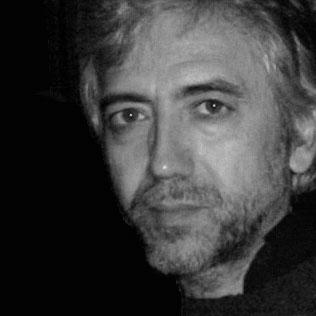Artikel
Jansma at the Poetry International Festival 2000

18 januari 2006
In Waaigat (Wind Hole) she seems to let go of the autobiographical. There is room for ice queens, a Mexican poetess, a dictator and a mermaid, although death and parting remain present. Critic Rob Schouten described Waaigat as ‘a fierce, many-sided, colourful collection, which stirs up life and death with equal force.’ Hier is de tijd (Here is Time) definitively established Jansma’s name as a poet. The title of this collection, which won her the prestigious VSB Poetry Prize, was borrowed from a line of the Flemish poet Herman de Coninck. More compelling even than in her earlier collections, history, archeology, death, loss and decay make themselves felt. As does the language itself, which asks questions to bring the writer closer to time. The ‘almost desperate, o, o’ from ‘About writing beautiful nature poems’ reveals the attitude of the poet, the ‘tinkerer on the square millimeter’, who notices the barrennes of life, while, on the other hand, looking around in wide-eyed wonder, trying to make sense of it all. [Esther Jansma took part in the Poetry International Festival Rotterdam 2000. This text was written on that occasion.]
Publications (selection):
Stem onder mijn bed (1988); Bloem, steen (1990); Waaigat (1993); Hier is de tijd (1998).
Esther Jansma is pleased with the words ‘Under the earth’, which Rutger Kopland used as the title of an essay about her poetry. ‘Not only because there is a fair amount of past in my poems, or because that title suggests a link between my poetry and my work as an archeologist, but because it makes me imagine a little girl wiping the earth from her eyes in wonder. (...) I like to be that wondering girl.’
Esther Jansma has realized both her childhood dreams, of becoming an archeologist and a writer. As an archeologist she developed a technique for establishing the age of wooden artifacts by studying the growth rings in the wood. Lending a voice to the past, making time visible in all its aspects, is also what she does in her poetry. Her first two collections are still largely autobiographical, dwelling mostly on her personal past. In her début volume Stem onder mijn bed (A Voice under My Bed) her childhood years, the bewildering world of a young girl who has lost her father, still plays a major role. Later, in Picknick op de wenteltrap (Picnic on the Winding Stairs), she brilliantly evokes this world of the bewildered girl in prose. The volume of poetry Bloem, steen (Flower, Stone) is about the loss of a child: ‘I want to hear her everywhere, I want / her to break rules and to be born / again and again and different and elsewhere. / I want a thousand lives for her.’In Waaigat (Wind Hole) she seems to let go of the autobiographical. There is room for ice queens, a Mexican poetess, a dictator and a mermaid, although death and parting remain present. Critic Rob Schouten described Waaigat as ‘a fierce, many-sided, colourful collection, which stirs up life and death with equal force.’ Hier is de tijd (Here is Time) definitively established Jansma’s name as a poet. The title of this collection, which won her the prestigious VSB Poetry Prize, was borrowed from a line of the Flemish poet Herman de Coninck. More compelling even than in her earlier collections, history, archeology, death, loss and decay make themselves felt. As does the language itself, which asks questions to bring the writer closer to time. The ‘almost desperate, o, o’ from ‘About writing beautiful nature poems’ reveals the attitude of the poet, the ‘tinkerer on the square millimeter’, who notices the barrennes of life, while, on the other hand, looking around in wide-eyed wonder, trying to make sense of it all. [Esther Jansma took part in the Poetry International Festival Rotterdam 2000. This text was written on that occasion.]
Publications (selection):
Stem onder mijn bed (1988); Bloem, steen (1990); Waaigat (1993); Hier is de tijd (1998).
© Janita Monna
Vertaler: Ko Kooman
Sponsors












Partners
LantarenVenster – Verhalenhuis Belvédère

